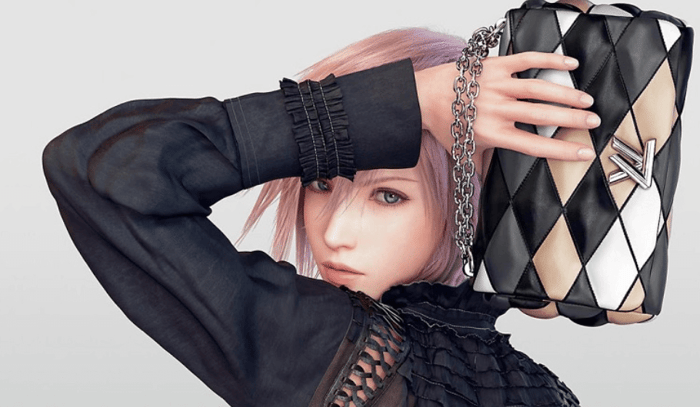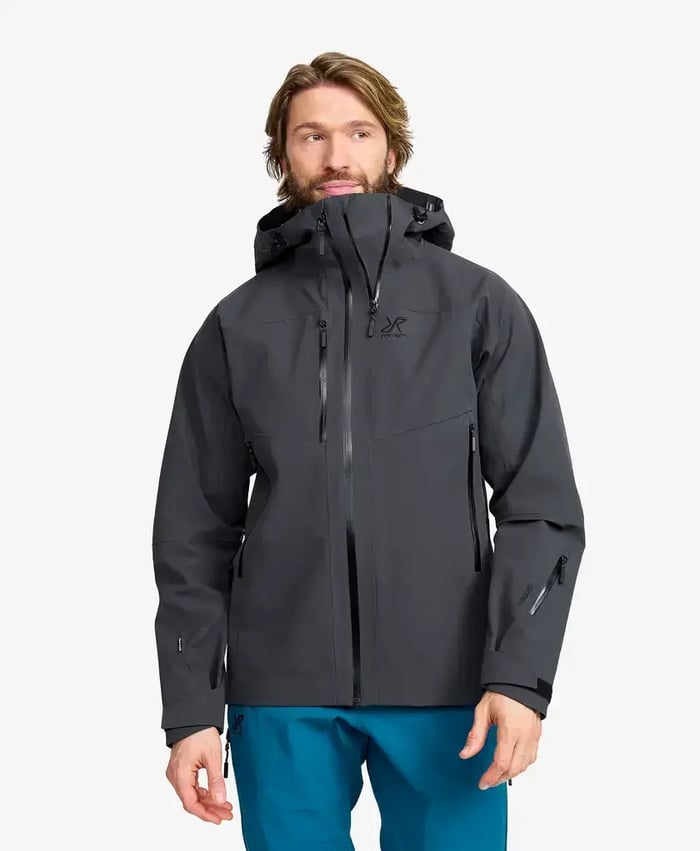Digital Fashion in the Metaverse: How Virtual Clothing is Shaping the Future of Online Style
Table of Contents
Fashion and change are always hand in hand, specially nowadays, when one of the most significant transformations is happening in the digital path. As virtual environments become more common in our daily lives, a new trend has emerged at the intersection of style and technology: digital fashion in the metaverse.
This innovation is not just a passing novelty, it's a shift that is redefining how we think about clothing, identity and personal expression in a connected online world.
Digital fashion in the metaverse refers to clothing and accessories that exist entirely in virtual spaces. These garments are not made from fabric or thread but from pixels and data. They are designed to be worn by avatars in online platforms such as gaming worlds, virtual social networks, or immersive experiences. In this new landscape, what you wear online can be just as meaningful and expressive as what you wear in the physical world.

Creative Freedom and Identity Expression
The rise of digital fashion in the metaverse has been increased by the growing popularity of virtual spaces where users interact and live digital versions of their lives. Whether it’s in multiplayer games, 3D social hubs, or virtual worlds, users are seeking ways to personalize their presence and express their tastes. Fashion, as always, becomes the perfect medium for this expression because it offers a sense of freedom and liberty. There are no size restrictions, no production costs, and no limits to creativity. Designers can craft looks that defy the laws of physics, incorporating animated elements, surreal textures, or crazy patterns. On the other hand, users can change outfits instantly, mix and match styles from different creators, or own unique digital pieces that no one else has.
The impact of digital fashion in the metaverse goes beyond entertainment. It is becoming a serious business. High-end brands, independent designers, and tech startups are all exploring ways to enter this space. Even major fashion houses like Louis Vuitton have already released digital-only collections, collaborated with virtual platforms (Fortnite in the case of LV), and even sold virtual outfits as limited edition assets. These efforts reflect a growing understanding that the digital presence of a brand is just as important as its physical storefront.

Commerce, Education, and Innovation
Ownership and exclusivity have also become central themes. Through blockchain technology and digital assets known as NFTs, users can own verifiable and limited pieces of digital fashion. This adds a new layer of value, enabling virtual clothing to be traded, collected, or showcased in a personal digital wardrobe. It turns fashion into a form of digital property and allows designers to protect their creations in virtual environments.

Fashion in the metaverse also opens up conversations about identity, cause, in a virtual world users are free to be however they choose. Avatars can be idealized versions, creative characters, or completely abstract forms. Fashion becomes the tool to shape and redefine identity in real time. This flexibility supports inclusivity, self-discovery, and exploration, removing traditional limits around gender, body type, or cultural expectations.
The social nature of the metaverse further enhances the importance of digital fashion. Just like in the real world, what you wear can affect how you are perceived and how you interact with others in virtual parties, workspaces, art exhibits, and concerts, these all become stages for fashion to play a role. Sharing a digital outfit, creating a lookbook for an avatar, or dressing for a virtual event all reinforce the social connection that fashion fosters.
Digital fashion in the metaverse is also shaping education and the creative process. Design schools and institutions are beginning to teach virtual garment creation, 3D modeling, and avatar styling. Students can develop collections without fabric, test them on digital models, and present their ideas in immersive environments. This expands access to fashion design and encourages more sustainable and experimental approaches to creativity.
Modelia and the Future of Digital Style
One major milestone in the rise of digital fashion in the metaverse is the emergence of Metaverse Fashion Week, a virtual runway event that brings together designers, brands, and users in an entirely digital space. Hosted in virtual platforms like Decentraland, this event allows participants to showcase, view, and even purchase digital fashion collections using their avatars. With immersive catwalks, real-time interaction, and global accessibility, Metaverse Fashion Week is challenging the traditional format of fashion shows and opening up a new frontier where creativity, technology, and community converge in bold and innovative ways.
Platforms like Modelia are contributing to this evolution by providing digital tools that allow designers and brands to showcase their fashion in realistic and immersive ways. Through 3D rendering, virtual avatars, and intuitive styling features, Modelia makes it easier to bring digital collections to life. These tools support creators who want to break into the world of digital fashion in the metaverse without needing large budgets or technical teams.
The commercial possibilities are just beginning to be explored. Digital garments can be used in marketing, content creation, and influencer campaigns. Social media users and creators are wearing virtual looks for online content, while brands are launching digital pop-ups and fashion drops in virtual spaces. Some companies are developing hybrid models, where digital outfits can be linked to real-world purchases or serve as previews before physical production.

Environmental sustainability is another key advantage of digital fashion in the metaverse. With no physical materials involved, digital garments do not contribute to textile waste or overproduction. This makes it easier to test styles, gauge demand, and avoid surplus inventory. It supports a more conscious and efficient model of fashion that aligns with the values of modern consumers.
As technology continues to improve, the quality and accessibility of digital fashion tools will grow. Augmented reality applications, for example, are allowing users to try on digital clothes in the real world using mobile devices. This creates a bridge between virtual fashion and everyday interaction, making the concept more tangible and practical for a wider audience.
Sign up in Modelia and keep learning about digital fashion!!
Virtual Try-On Revolution: Experience Fashion, Makeup & More
Virtual try-on technology is transforming online shopping, letting you see how clothes, accessories, shoes, or makeup look before you buy. But to get the most out of it, there are tips and tricks that can enhance your experience. This guide will help you navigate virtual try-on tools like a pro.
What is Virtual Try-On?
Virtual try-on combines augmented reality (AR), artificial intelligence (AI), and sometimes 3D modeling to simulate products on a user. Whether it’s trying on a pair of glasses, a jacket, or a lipstick shade, virtual try-on creates a realistic preview without the need to visit a physical store.
How to Get Started
Choose the Right Platform
Not all virtual try-on tools are created equal. Look for platforms that support high-quality 3D models, accurate sizing, and realistic textures. Many fashion and beauty brands now integrate these features directly into their apps or websites.Provide Accurate Information
For clothing or shoes, entering your correct measurements ensures the virtual fit is realistic. For accessories like glasses or jewelry, provide your face shape or hand size if the tool allows.Use Proper Lighting
When using a live camera try-on, natural or well-lit rooms give more accurate previews of colors and textures. Avoid dark or overly bright environments.Experiment with Styles and Colors
Don’t hesitate to try multiple styles, sizes, and colors. Virtual try-on allows risk-free experimentation, helping you discover options you might not have considered.Rotate and Zoom
Take advantage of interactive features like rotation and zoom. Viewing items from multiple angles ensures you understand how they look in motion and from different perspectives.Compare with Real Products
Some platforms allow side-by-side comparisons or AR overlays on your existing wardrobe. This helps visualize how new items complement what you already own.
Tips for a Better Experience
Use the Latest App Version: Updates often improve accuracy, performance, and new features.
Check Reviews and Demos: Some tools offer sample try-ons or reviews that show real-life results.
Take Screenshots: Save your favorite looks for future reference or to share with friends before buying.
Combine with Size Recommendations: Some platforms pair virtual try-on with AI size suggestions for the best fit.
Final Thoughts: The Digital Wardrobe Revolution
In the future, we can expect digital fashion in the metaverse to play an even larger role in how we experience and think about style. From virtual closets and AI stylists to personalized avatars and interactive fashion shows, the possibilities are vast and exciting. Fashion will no longer be confined to physical constraints or seasonal cycles, it will be fluid, fast, and endlessly customizable.
The evolution of digital fashion in the metaverse is about more than technology. It is about creativity, identity, and community. It invites people to participate, play, and express themselves in new ways. Whether you are a designer, a brand, or a fashion enthusiast, this new frontier offers an open canvas for exploration. As we continue to blend our digital and physical lives, what we wear online will matter more than ever and digital fashion will be at the heart of that transformation.
How would you rate this article:
Related Articles
- AI Video Generator for Shopify
- How Virtual Try-On Technology Enhances Your Online Shopping Experience
- AR Fashion App: The Future of Shopping with Augmented Reality Try-Ons and Styling
- How an AI Personal Stylist Can Upgrade Your Wardrobe
- How artificial intelligence is transforming the fashion industry
- The Best Fashion Blogs to Follow for Daily Style Inspiration
- Best AI Muppet Generators for 2026
- Botika.io Pricing, Plans and Feature Breakdown
- 10 Best AI Fashion Free Model Generators
- Virtual Fitting Rooms: How Technology is Revolutionizing Online Shopping and Fashion
